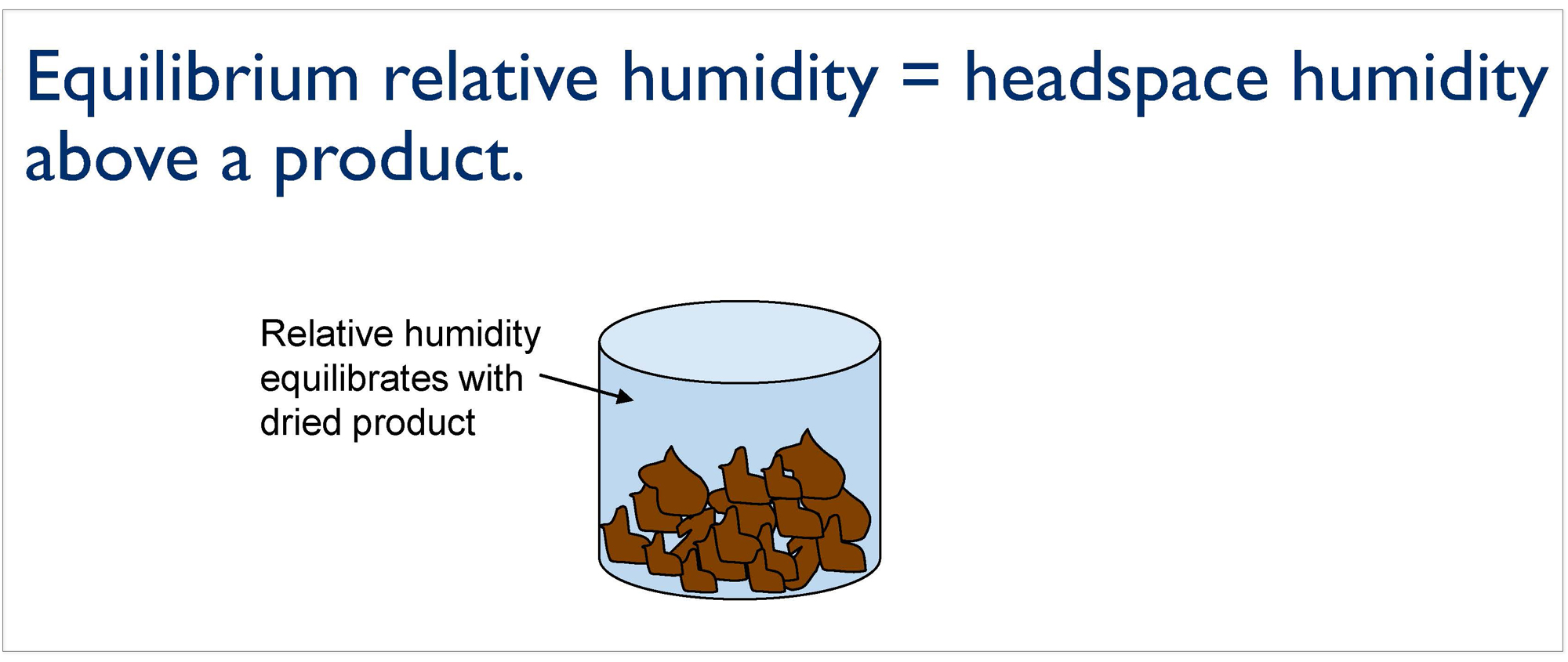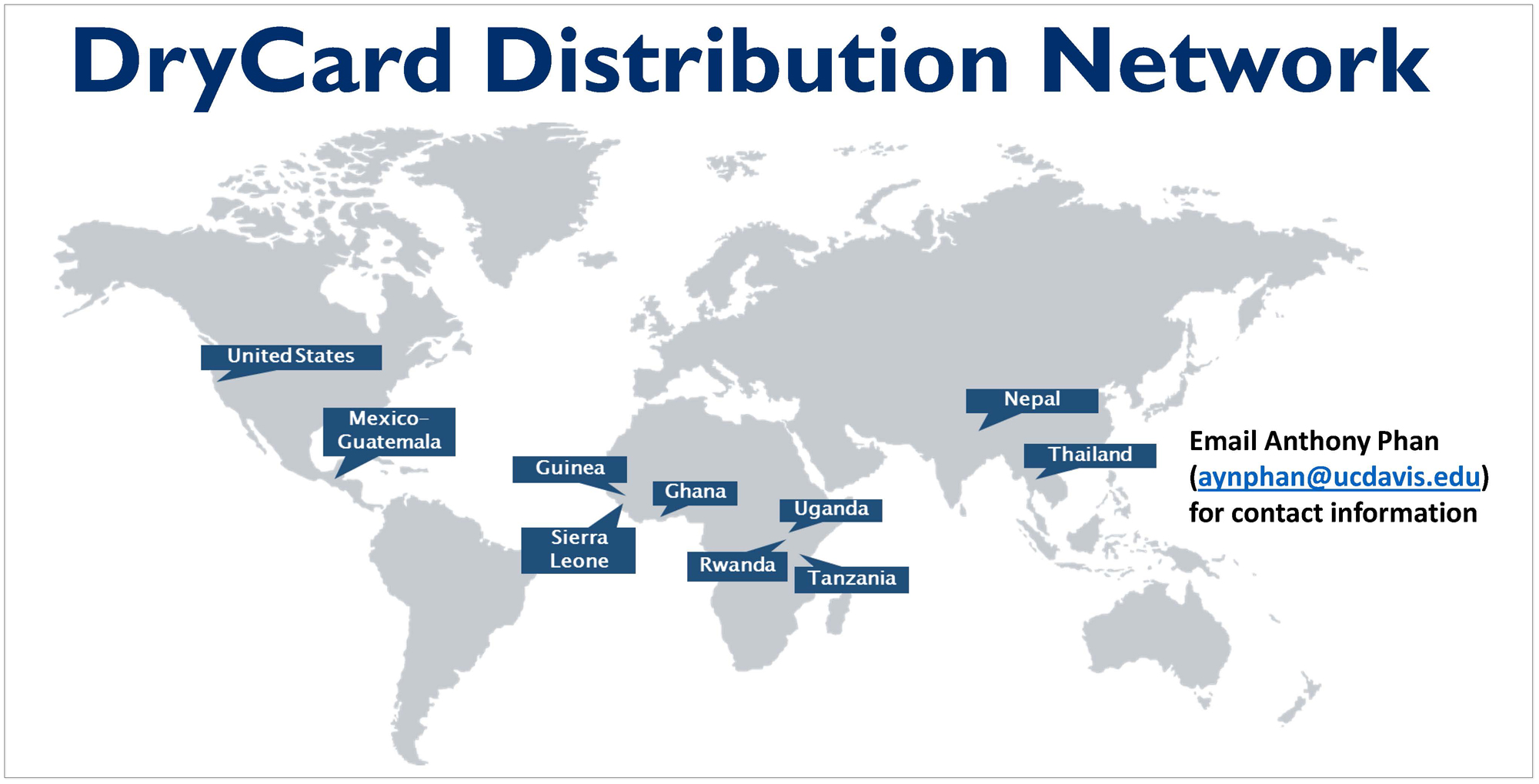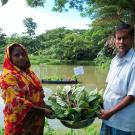This Horticulture Innovation Lab webinar introduces the concept of the "dry chain," to protect the quality and safety of dried commodities. The hour-long webinar was held live on April 23, 2019 for participants from the Horticulture Innovation Lab's global network. This summary includes the recorded webinar video as well as the individual presentation slides, separated by speaker.
Presenters included:
- Kent Bradford – University of California, Davis, distinguished professor
- James Thompson – University of California, Davis, emeritus agricultural engineer
- Michael Reid – Horticulture Innovation Lab's leader for innovation and technology
- Anthony Phan – Horticulture Innovation Lab analyst working with the DryCard™
- Mohd. Rezaul Islam ("Rana") – Horticulture Innovation Lab research associate with WorldFish
Panelists introduced the concept of the dry chain and discussed the technologies and steps required to properly dry a product, determine whether the product is dry enough for storage, and keep that product dry. The speakers also provided insights from experience in Bangladesh, implementing the dry chain with the Horticulture Innovation Lab’s project focused on examining nutrition impacts of horticultural innovations.
Watch the video recording of the webinar above, read the summaries of their talks below, or browse the slides from each speaker's presentation, in order of their presentation.
Introducing the 'dry chain' for seed and commodity preservation
Kent Bradford, UC Davis professor, introduced the concept of the dry chain and why dryness is a critical factor in seed and food preservation. He explained that one-third of food produced is lost before reaching the consumer, and 4.5 billion people have aflatoxin in their diet. A large and growing percentage of the world’s population lives in areas where high humidity creates problems for seed and commodity storage.
Fungi and insects are able to grow among stored commodities, if the storage environment has an equilibrium relative humidity above a critical level of 65%.
When it comes to global food loss and waste, the largest fraction of food lost by weight is fruits and vegetables, but in terms of calories, dry commodities (cereals, oil seeds and pulses) represent 61% of food loss and waste. Preventing postharvest loss in both categories of food — fresh produce and dried food products — is very important, but less attention has been paid to reducing postharvest losses among dried food commodities.
Comparing cold chain and dry chain
For fresh produce, the cold chain concept begins at harvest and requires that produce be cooled as quickly as possible and then those low temperatures be maintained throughout the whole process, including transportation, storage, markets, and consumer refrigerators. The cold chain requires that no links be broken between stages, where the temperature might fluctuate, because increased temperatures will cause product losses.
The dry chain correlates directly to the cold chain concept, but requires that products be dried sufficiently and that dryness be maintained via packaging over the life of the product to prevent re-absorption of moisture from the atmosphere. Once dried and appropriately packaged, dried commodities don't require additional cost to maintain their quality and safety.

Basics of the dry chain and what not to do
The basics of the dry chain are harvesting and then sun drying when possible, followed by additional drying to lower the relative humidity levels around a product below 70% RH. Then package in moisture-proof containers for storage and transportation, keeping the containers sealed continuously until the product arrives at the consumer. What not to do in the dry chain:
- Do not store moist seeds or grains in bulk.
- Do not use porous packaging such as burlap bags or woven bags.
- Do not leave packages of seed, grain or dried foods open.
- Do not expose dried products to humid air.
The basics of the dry chain are summarized as "Make things dry and keep them dry."
Drying methods and technologies
Drying beads are a zeolite-based dessicant tool that can be used to dry commodities, which has been demonstrated to be effective for drying seeds and food commodities. Seeds and commodities should be harvested, dried in the sun or air, and then further dried by placing the product with drying beads in a hermetic bag or container. Products should be dried to low moisture content/relative humidity for extended storage. After this, drying beads can be removed from the container and reheated, to be reused later. Bradford discusses differences between zeolite drying beads and silica gel, along with multiple systems that make use of drying beads at different scales and in different farming arrangements.
Drying and packaging provides a low energy method for medium-term storage of germplasm and planting seeds, as refrigeration and dehumidification are not required during storage.
Bradford's presentation also provides an overview of his work to implement seed drying and storage systems in India and Nepal. He noted that Denise Costich, who leads germplasm conservation for CIMMYT in Mexico, is using drying beads and DryCards to assist communities in Guatemala to better store their local maize seed. He also gave a brief overview of the Horticulture Innovation lab project focused on scaling up seed drying in Bangladesh.
How fungal growth is related to relative humidity, water activity and moisture content
James Thompson, UC Davis emeritus agricultural engineer, presented on water activity and fungal growth — with a focus on the relationships and differences between moisture content and relative humidity (his segment of the recording starts at 25:53 minutes).

What is equilibrium relative humidity or ERH?
Equilibrium relative humidity and water activity are very similar, based on the same idea. If you put a product into a sealed container, the humidity of the headspace (and air around the product) will achieve an equilibrium relative humidity based on the moisture content of the product. Water activity is a term used more often in food science, but is closely related to relative humidity. ERH is expressed as a percent; water activity equals ERH divided by 100 and is expressed as a ratio between 0 and 1. So 65% ERH is equal to 0.65 water activity (Aw).
- Water activity (Aw) = equilibrium relative humidity (ERH) / 100
- 0.65 Aw = 65% ERH
The key idea is that if we measure the humidity of the air above the product, we'll understand the product's moisture "status." Growth rates of molds, yeasts, and bacteria are significantly reduced below 0.7 water activity. If water activity levels are kept below 0.65, then growth of micro organisms is virtually stopped. We want to achieve equilibrium relative humidity levels below 65% for safe, long-term storage of dried food products.
How is equilibrium relative humidity related to moisture content?
Is there a relationship between equilibrium relative humidity and moisture content? The relationship can be estimated, but not converted precisely. Each commodity — for example coffee or maize — has a different relationship between the critical moisture content percent that is associated with that product achieving 65% equilibrium relative humidity. This is one of the advantages of using equilibrium relative humidity to measure and predict mold growth: It is a standard measurement between products that can work for any product, independent of the moisture content of the product.
The relationship between a commodity's moisture content and its equilibrium relative humidity is affected by product temperature, whether the product is drying (desorbing water) or gaining water (adsorbing water), the product cultivar, growing conditions, drying process (particularly high temperature exposure). If all of these factors are controlled, then equilibrium relative humidity can be used to predict moisture content within ±0.5%. Because it is difficult to control all of those factors, our team prefers using equilibrium relative humidity as a concept to effectively measure dryness in relation to microorganism growth.
Measuring moisture content and equilibrium relative humidity
Measuring moisture content has advantages, which is that it can be measured quickly. But it can also be expensive and requires frequent calibration. Low-cost moisture content testers can cost less than $300, but have lower accuracy. Larger testers can cost $2,000-$5,000 and need to be calibrated for each product and from each growing location. Each sample for calibration must be representative of all of the product that is being tested.
Using equilibrium relative humidity is how the DryCard works. The DryCard uses a cobalt chloride strip that changes color based on the humidity around it. At low humidity levels, such as 25% equilibrium relative humidity, the cobalt chloride strip is dark blue and then changes to a purple or mauve as humidity increases. At the critical level of 65% equilibrium relative humidity, the cobalt chloride strip is a bright pink. When the paper turns bright pink, then you have clear indication that your product has too much water activity. When the paper turns mauve or blue, then you have achieved a safe relative humidity for storage. The DryCard becomes a critical tool to manage moisture and dryness in any dried commodity — whether grains, dried fruit, nuts, dried fish, meat — and is inherently calibrated.
Other options for measuring equilibrium relative humidity are hygrometers which can retail for $3-10 each and work very similarly to a DryCard. A water activity meter, used in laboratories, can cost $12,000 and is extremely fast and accurate.
Measuring equilibrium relative humidity can take time. After the drying process, product has equilibrated after drying for 4-24 hours, depending on the particle size of the product. Product also needs to have uniform temperature, as warm or cold areas can cause humidity to not be uniform. The DryCard or hygrometer needs to be exposed to the equilibrated product for 30-60 minutes for an approximate measurement of equilibrium relative humidity. Longer exposure of the DryCard or hygrometer overnight gives a more precise equilibrium relative humidity determination — which could happen when drying product in a solar dryer, for example, and bringing the product inside for overnight storage and to measure its relative humidity to determine if it is dry enough to store safely.
Dry storage, a key link in the dry chain
This presentation about dry chain storage was delivered by Michael Reid, UC Davis professor emeritus and the Horticulture Innovation Lab's leader for innovation and technology. (His segment of the webinar recording starts at about 41:40 minutes.)
Proper storage of dried goods maintains the quality of grains and pulses. It also slows the development of rancidity and kernel darkening in nuts and preserves seed vitality. Dry storage prevents mold, insect damage and thwarts attacks by other pests like rodents and birds.
In order to maintain the dry chain, products should be stored below 0.65 water activity in sealed hermetic containers like plastic bags, drums, steel canisters, Purdue PICS bags (lined with polyethylene) or silos. The benefits of hermetic storage include that curbing pests by depleting the available oxygen around the product which also reduces mold growth. Thus, hermetic storage containers, which maintain low water activity, are an essential link in the dry chain.
Scaling DryCards around the world with entrepreneurs
Anthony Phan, Horticulture Innovation Lab project analyst, discussed the scaling and commercialization of the DryCard™ in developing countries.
To make the DryCard more widely available around the world, the Horticulture Innovation Lab is working with entrepreneurs and businesses to set up in-country manufacturing, marketing and sales f the DryCard. DryCards can be made locally using materials that cost just 15 cents per card and can be sold for over $1 each.
To set up DryCard entrepreneurs, the Horticulture Innovation Lab identifies suitable businesses or entrepreneurs and then reviews their business plan for DryCard manufacturing and sales. Once vetting is complete, the program establishes an agreement with the entrepreneur for production, reporting, and ongoing support. The Horticulture Innovation Lab sends each DryCard start-up with the resources including a starter pack of materials to produce their first 10,000 DryCards. Then DryCard entrepreneurs begin their in-country production and sales.

The DryCard is manufactured, marketed and sold in 10 countries — including the United States, Mexico, Guatemala, Guinea, Sierra Leone, Ghana, Rwanda, Uganda, Tanzania, Nepal, and Thailand — with over 22,000 DryCards sold (30,000 have been distributed).
So far DryCard businesses include social enterprises, consulting companies, and agricultural input supplies. Many DryCard entrepreneurs also incorporate related postharvest technologies into their business. The Horticulture Innovation Lab continues to look for more DryCard entrepreneurs. If you are interested in becoming a DryCard distribrutor, contact us via the sign-ups at http://drycard.ucdavis.edu.
Observations from implementing the dry chain in Bangladesh
Mohd. Rezaul Islam, a WorldFish research associate who works on a Horticulture Innovation lab project focused on scaling up seed drying in Bangladesh, presented about the practical considerations in implementing the dry chain in Bangladesh (beginning at 48:00 minutes into the webinar recording).
The primary dried products in Bangladesh include chili, fish, pulses, cereals, mango, ground nuts and sunflower. When using traditional drying methods, Bangladeshi farmers rely on color, scent and aroma, and sound to determine if a product is dry. Farmers will try to break a product and if it makes a brittle sound, consider it dry.
For the Horticulture Innovation Lab project, three chimney solar dryers (1 for fish and 2 for fruit/vegetable drying) were built in Barishal, Bangladesh, and designed to be shared by three upzilas (Bangladeshi administrative regions). The project team trained 40 people on building and drying the chimney dryer and also introduced the DryCard to the area.
Perceived benefits of the chimney solar dryer include that it is easy to construct and maintain, it dries products faster than other drying methods and it keeps food safe and protected. The chimney solar dryer also lends fish a better color, smell and taste than traditional drying methods. As well, It increases the profit that farmers yield for dried fish and vegetables and can even double the price.
Economic implications of the chimney solar dryer
For dryers at Shrirampur and Parerhat, the revenue generated from dried products surpassed costs starting in the second year. The dryer in Baghpara was used to dry low value crops – cabbage, gourd, mango and banana. Thus, its revenue stream never surpassed its costs. As a result, researchers discovered that the economic performance of technologies like the chimney dryer varies significantly depending on the products being dried (high vs low value crops), as well as the product unit prices.
Key challenges include building public awareness about the technology, translating the chimney solar dryer's design to carpenters, users' lack of concern for food hygiene and sourcing the correct materials including wood and plastic. Another challenge involves finding a market niche for dried fruit because currently there is no market demand for dried fruit in Bangladesh. As well, users are currently depending on project support to build, use and repair the chimney solar dryers. There is concern that farmers will shift back to traditional ground drying methods after the project ends because it is easier and more familiar. As well, unprecedented weather conditions could impact the efficacy of the chimney solar dryer, which could also benefit from increased capacity for commercial drying.
One community built a second chimney solar dryer for extra capacity without any project support. As well, there is a prototype that has higher capacity (40 kg) for fish drying that has been tested by the Horticulture Innovation Lab in collaboration with Patuakhali Science and Technology University. So far, three chimney solar dryers have been built in Kolapara and four in Nidrachar.
A trained farmer that built dryers have been hired by WorldFish to provide construction, repair service, and training. As well, WorldFish scientists saw opportunities for fish drying and built seven dryers in local communities near the sea. Recently, WorldFish secured funding from the World Food Program to construct 26 dryers for the host community in Cozxsbazar which is currently battling food insecurity because of increased food demand due to the Rohyinga crisis.
The webinar concludes with an assortment of questions and answers between listeners and panelists.
More information related to the dry chain:
- Official Dry Chain website
- Chimney solar dryer information from the Horticulture Innovation Lab
- DryCard information from the Horticulture Innovation Lab
- More dry chain information from the Horticulture Innovation Lab


